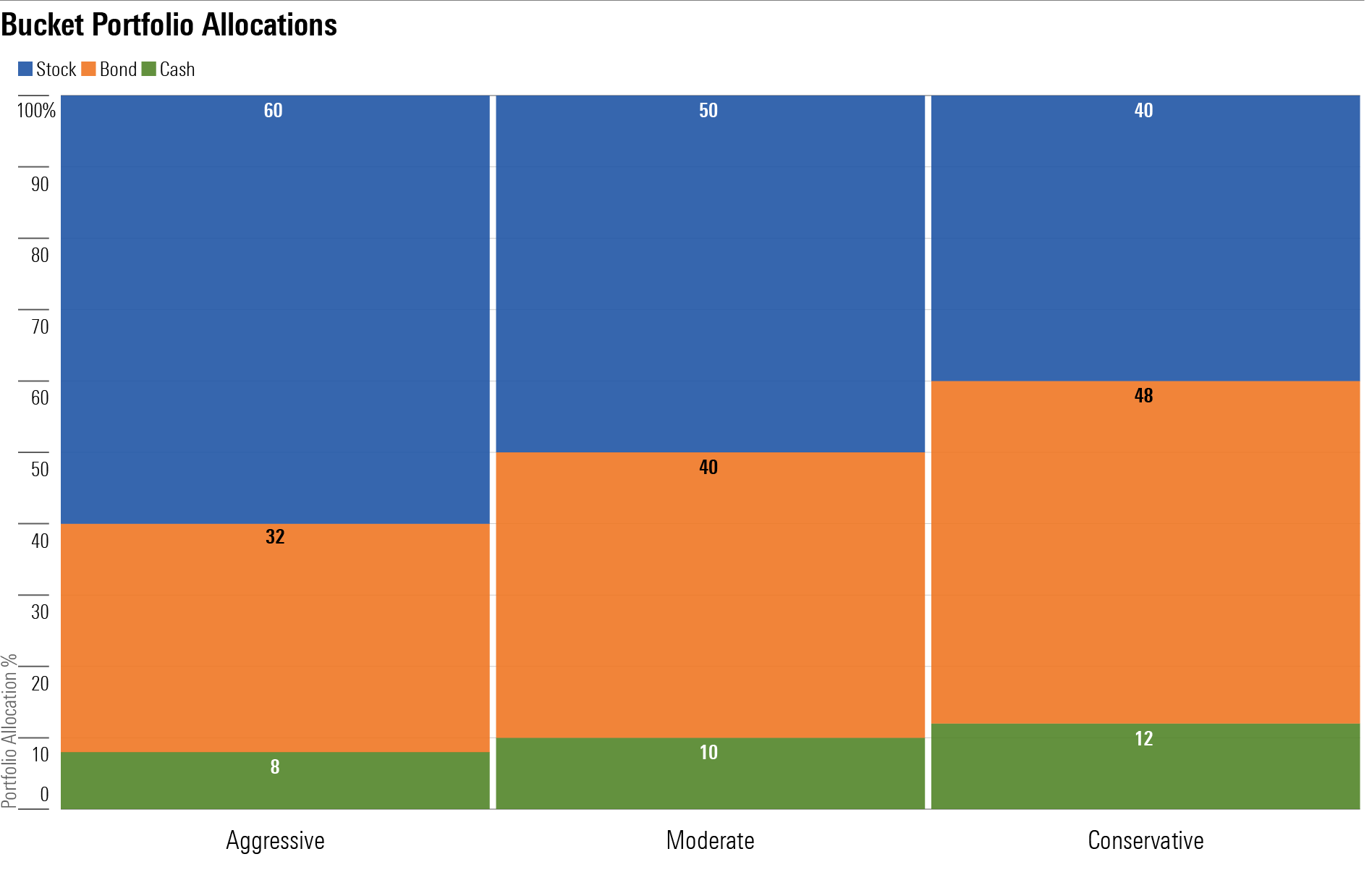Tax-Efficient Retirement-Bucket Portfolios for T. Rowe Price Investors
The firm’s municipal-bond funds are solid, but we make some trade-offs on the equity side in the name of tax efficiency.

There’s no real magic to creating tax-efficient portfolios. On the bond side, favor municipal bonds, especially if you’re in a higher tax bracket. On the stock side, broad-market index mutual funds and exchange-traded funds generally do a good job of limiting the drag of taxable capital gains; ditto for tax-managed equity funds.
T. Rowe Price has long been a Morningstar favorite thanks to its sober management style and record of strong stewardship. But the process of building a tax-efficient T. Rowe portfolio highlights a few shortcomings in the firm’s lineup for tax-conscious investors. While T. Rowe’s municipal-bond funds are topnotch, it has fewer standout options to suit tax-conscious equity investors. The firm does field a lineup of basic equity-index offerings, but their costs are higher than many rivals’ index funds and ETFs.
About the Portfolios
For these three tax-efficient bucket portfolios, I employed a bucket approach to their structure. Each portfolio includes a cash component to cover a retiree’s near-term expenses (bucket 1), high-quality bonds for intermediate-term spending (bucket 2), and equities for long-term growth. It’s worth noting, however, that I avoided some of the higher-risk/higher-income fixed-income types that appeared in my other portfolios—for example, high-yield and emerging-markets bonds. Because their income distributions are taxed at investors’ ordinary income tax rates, they’re a better fit for tax-sheltered accounts. These investments have risk/reward profiles that fall between equities and bonds, so it’s reasonable to nudge up the tax-efficient portfolios’ equity exposures to compensate for the fact that they’re missing here.
On the equity side, I employed broad-market index funds, both U.S. and international. On the fixed-income side, I eschewed bond funds with higher incomes and, in turn, higher tax costs. Instead, I employed municipal-bond funds—in this case, from Fidelity. For the cash piece—bucket one—investors should shop around for the highest safe yield they can find.
How to Use Them
Retirees will want to be sure to “right-size” the components of these portfolios based on their spending plans and other considerations. If they’re prioritizing withdrawals from their taxable portfolios over other account types—in line with tax-efficient withdrawal-sequencing considerations—they may want a larger cash component than is outlined here. (I typically recommend that retirees hold six months’ to two years’ worth of planned expenditures in true cash instruments.) Moreover, retirees will want to take into account their own time horizons, risk tolerance, and investment goals when setting their allocations. As with the other retiree bucket portfolios, the asset allocations shown here assume that the retiree will spend all of his or her assets, which may not be the case for those who would like to leave a bequest to loved ones or charity.
Additionally, retirees will also want to assess their own tax rates to determine whether they’re better off in municipal bonds, which are included in the portfolios below, or taxable bonds once the haircut of taxes is factored in. Investors in high tax brackets will want to investigate whether a municipal money market fund might not have a higher aftertax yield than a taxable money market fund or high-yield savings account.

Aggressive Tax-Efficient Retirement-Bucket Portfolio for T. Rowe Price Investors
Anticipated Time Horizon: 20-25 years
Risk Tolerance/Capacity: High
Target Stock/Bond/Cash Mix: 60/32/8
Bucket 1: Years 1-2
- 8%: Cash
Bucket 2: Years 3-10
- 10%: T. Rowe Price Tax-Free Short-Intermediate PRFSX
- 22%: T. Rowe Price Summit Municipal Intermediate PRSMX
Bucket 3: Years 11 and Beyond
- 40%: T. Rowe Price Total Equity Market Index POMIX
- 20%: T. Rowe Price International Equity Index PIEQX
Moderate Tax-Efficient Retirement-Bucket Portfolio for T. Rowe Price Investors
Anticipated Time Horizon: 15-plus years
Risk Tolerance/Capacity: Average
Target Stock/Bond/Cash Mix: 50/40/10
Bucket 1: Years 1-2
- 10%: Cash
Bucket 2: Years 3-10
- 15%: T. Rowe Price Tax-Free Short-Intermediate PRFSX
- 25%: T. Rowe Price Summit Municipal Intermediate PRSMX
Bucket 3: Years 11 and Beyond
- 35%: T. Rowe Price Total Equity Market Index POMIX
- 15%: T. Rowe Price International Equity Index PIEQX
Conservative Tax-Efficient Retirement-Bucket Portfolio for T. Rowe Price Investors
Anticipated Time Horizon: 15 years or fewer
Risk Tolerance/Capacity: Low
Target Stock/Bond/Cash Mix: 40/48/12
Bucket 1: Years 1-2
- 12%: Cash
Bucket 2: Years 3-10
- 20%: T. Rowe Price Tax-Free Short-Intermediate PRFSX
- 28%: T. Rowe Price Summit Municipal Intermediate PRSMX
Bucket 3: Years 11 and Beyond
The author or authors do not own shares in any securities mentioned in this article. Find out about Morningstar’s editorial policies.

/s3.amazonaws.com/arc-authors/morningstar/66112c3a-1edc-4f2a-ad8e-317f22d64dd3.jpg)
/cloudfront-us-east-1.images.arcpublishing.com/morningstar/MFL6LHZXFVFYFOAVQBMECBG6RM.png)
/cloudfront-us-east-1.images.arcpublishing.com/morningstar/HCVXKY35QNVZ4AHAWI2N4JWONA.png)
/cloudfront-us-east-1.images.arcpublishing.com/morningstar/EGA35LGTJFBVTDK3OCMQCHW7XQ.png)
:quality(80)/s3.amazonaws.com/arc-authors/morningstar/66112c3a-1edc-4f2a-ad8e-317f22d64dd3.jpg)